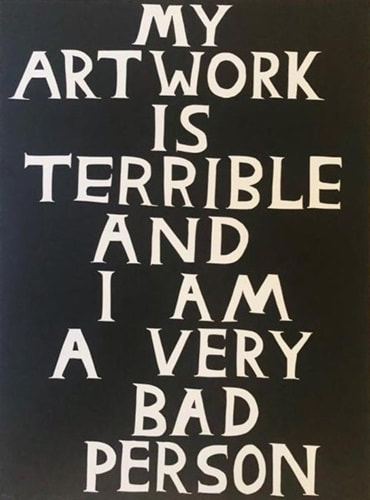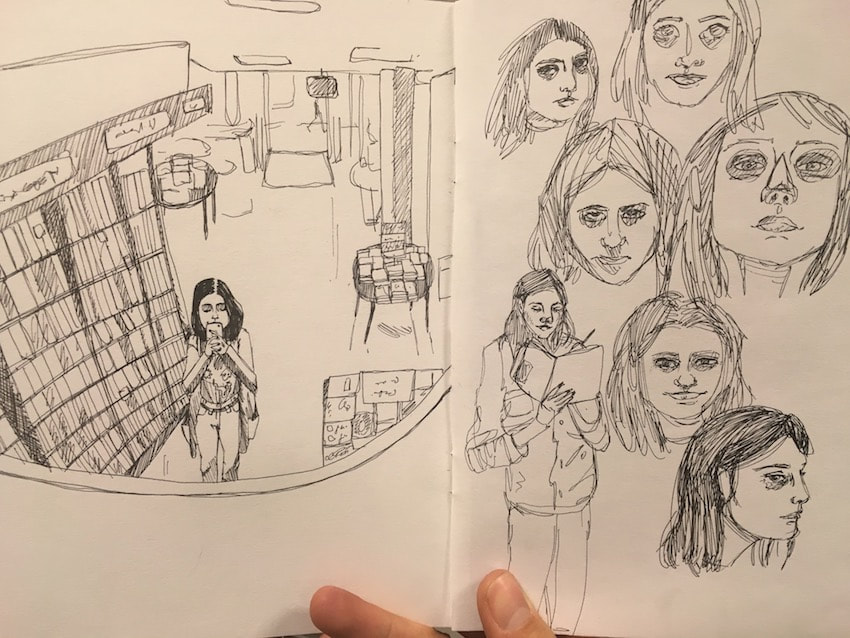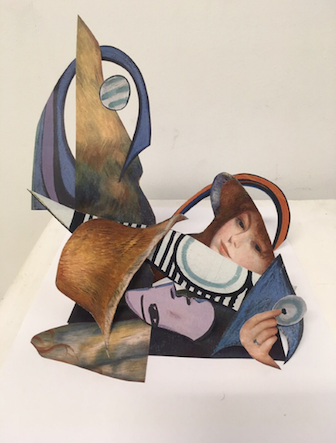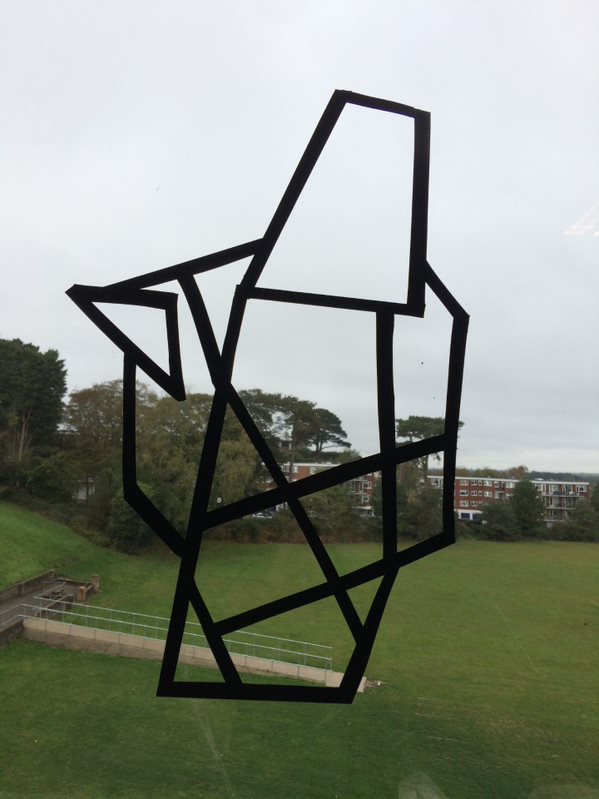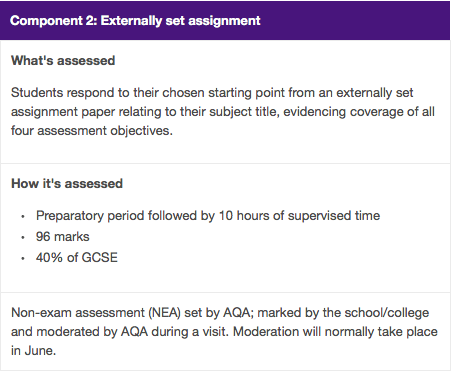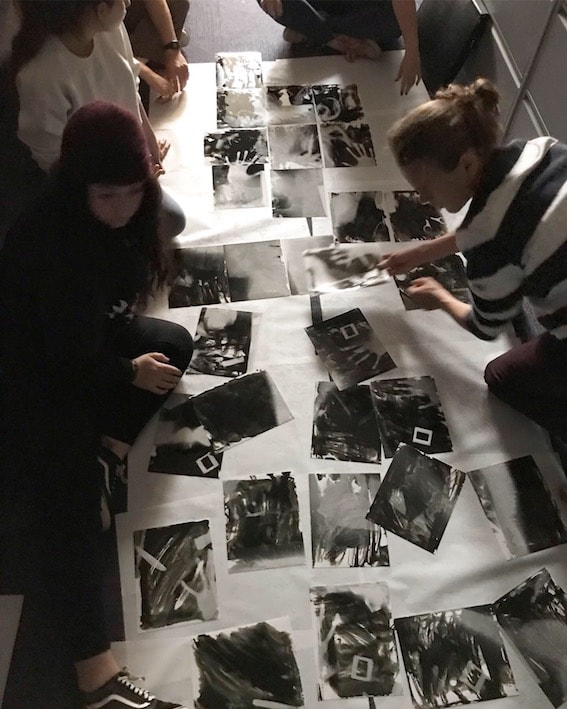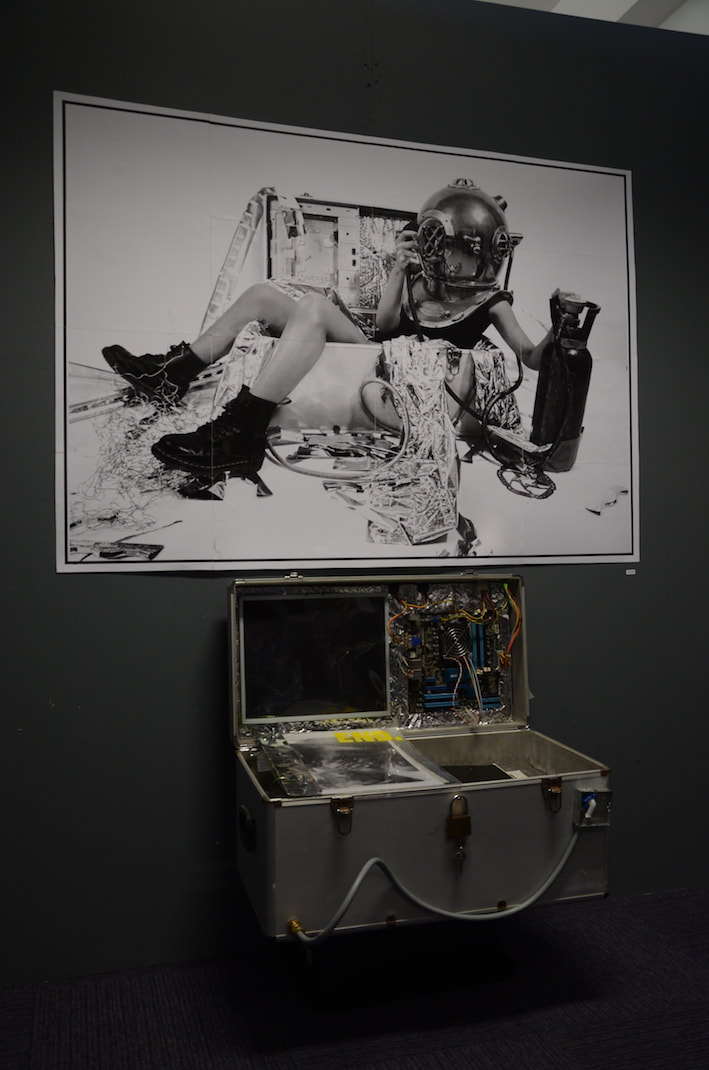This page has been devised to help KS3 students (and parents) considering a visual arts based option at KS4. If you're in search of an answer to a specific question - How is GCSE Art structured and assessed? What kind of work will we do? Do I need to have my own camera for GCSE Photography? etc. - you might want to scroll directly to the lower section. But if you have the slightest doubts regarding an arts option, please read on...
A creative option is neither a luxury Nor AN indulgence. An arts education provides an outlet for young people - a healthy antidote to SOME OF THE unnecessary pressures AND ANXIETIES THAT CAN ARISE.
WHY STUDY ART?
It's a big question, one with lots of potential answers. The resources below share various perspectives, but before you dive in it might be helpful (or troublesome, perhaps) - whether you are a parent or student - to reflect on your own ambitions, agendas, experiences and biases. (Studying) Art can mean different things to different people. Open-mindedness, critical thinking and authenticity - skills that studying art can certainly develop - are important at this point of decision making.
Work through the following prompts and use your responses to frame your further reading:
Work through the following prompts and use your responses to frame your further reading:
|
Which of the following do you consider most important to gain from studying an art option at GCSE? Is it possible for you to order these as priorities?
|
In short, an arts education can provide opportunities to cover all of the above points. But rather than being an essential aspect of the KS4 curriculum, KS3 students find themselves making individual decisions regarding their creative development, often based on limited experiences and opportunities or worse - misguided advice or fears. The following section aims to lift the lid on some of these concerns.
|
Which of the following fears or concerns might prevent you from studying art?
|
As with all subjects, numerous factors influence our individual experiences of lessons - teachers, relationships, resources, group behaviours are perhaps the most obvious. Art teachers (more than other subject teachers) have increased freedom to decide what is taught and how this might be done. This can be of great benefit at GCSE and A level where more time is available to adapt to individual needs and interests. But this also means that art lessons across schools - and even within a school - can vary greatly, and as a consequence so can individual experiences and perceptions of art. The following slideshow, albeit playfully ('play' being a good thing to artists) considers some of these concerns.
The examples of student work, below (from the beginning of their studies), demonstrate a range of experimental approaches that might all be described as forms of drawing - be it on paper, in space or via the arranging of materials and objects. Some students mistakingly believe that the ability to draw accurately is a measure of creative ability and suitability for GCSE. This couldn't be more wrong. Drawing 'realistically' can be a taught skill with many benefits, but drawing is not limited to this. It can also be a form of experimentation, investigation, play, expression, design, performance, collaboration... and much more.
Will an arts-based option be beneficial for my future steps (even if ultimately I don't pursue a creative route) ?
As a Senior Leader in school, currently responsible for Year 12, living and breathing issues relating to 6th form (including entries, university applications, and all manner of student concerns), I feel confident to answer this. Simply put: Yes. Art is one of the few subjects that is (in effect) coursework-based. On a practical, clerical level, many 6th forms (such as ours) have a baseline level of GCSE Grades required to access A level or BTEC study (e.g. 5 subjects at level 4 or above). Having increased control of your final grade (rather than it resting on a final 'sports-hall' style exam) has obvious advantages: students that are consistent in their efforts and involvement are inevitably rewarded. But still, let's not dwell on grades. Grades can muddy motivations and cause unnecessary anxieties. (It's worth adding too, A levels are not necessarily the route for everyone at the end of GCSE study).
Significantly, art lessons actively promote original thinking and collaboration - independent and interdependent learning...making, problem-solving and more. These are qualities desired in all students, regardless if continuing with an art-based option or not in 6th form and beyond.
Of course, if you have a very fixed idea about future A level or university pathways, research when making your GCSE options is key. But broadly speaking, for GCSE level - whether it's art, photography, textiles, design technology, music, drama, dance or something else - at least one creative option to maintain a broad, diverse and balanced GCSE experience is recommended. This makes absolute sense for personal wellbeing and holistic development.
Significantly, art lessons actively promote original thinking and collaboration - independent and interdependent learning...making, problem-solving and more. These are qualities desired in all students, regardless if continuing with an art-based option or not in 6th form and beyond.
Of course, if you have a very fixed idea about future A level or university pathways, research when making your GCSE options is key. But broadly speaking, for GCSE level - whether it's art, photography, textiles, design technology, music, drama, dance or something else - at least one creative option to maintain a broad, diverse and balanced GCSE experience is recommended. This makes absolute sense for personal wellbeing and holistic development.
I really enjoy art because of the independence that comes with it. Everyone in our class MIGHT BEGIN WITH A SIMILAR STARTING POINT but wITH TIME WE each DEVELOP OUR WORK differently. FREYA, YEAR 10
|
|
In October 2018, a landmark research project commissioned by Arts Council England outlined the overwhelmingly positive benefits of arts and cultural education on the lives of young people. Taken from TateShots 2018
The research, 'Tracking Arts Learning and Engagement (TALE)', undertaken by the School of Education at the University of Nottingham can be viewed in depth here. An additional resource produced by Tate can be viewed here. This contains a wide range of insightful statements and quotes regarding the benefits of an arts education. Some of these have been shared below: |
- Arts subjects encourage self-expression and creativity and can build confidence as well as a sense of individual identity.
- Creativity can help with wellbeing and improving health and happiness – many students in the TALE study commented that arts lessons acted as an outlet for releasing the pressures of studying as well as those of everyday life.
- Studying arts subjects helps to develop critical thinking and the ability to interpret the world around us.
- The way art is taught means that interaction with other students and with the teacher is different in art and design classes. Students comment on the bonds they form with classmates because of their shared interests and ideas. The art teacher is someone they can bounce ideas off rather than telling them what to do.
- Creativity is essential in a global economy that needs a workforce that is knowledgeable, imaginative and innovative. Studying arts subjects also increases social mobility – encouraging and motivating students from low-income families to go into higher education. Studying the arts can also help with understanding, interpreting and negotiating the complexities and diversity of society
- Engagement with the arts helps young people develop a sense of their own identity and value. This in turn develops personal responsibility within their school and wider community
- Arts and cultural learning encourages awareness, empathy and appreciation of difference and diversity and the views of others
CAN STUDYING AN ARTS-BASED OPTION LEAD TO A CAREER?
|
Definitely. I'm going to resist the obvious here and not write a list of ALL the potential creative career options. It'll likely be out of date by the time I've finished. But shared here is a poster lifted from our friends at The Student Art Guide who also offer further insights here. Here are some other potentially helpful links relating to creative career prospects:
|
The COVID-19 pandemic has hit many industries, businesses and individual workers hard, and the creative industries are no exception. At the time of writing it is difficult to forecast how this, coupled with Brexit, will pan out for future careers for young people. However, the pandemic has emphasised the essential role that creativity plays in our lives - from the art, music, films and entertainment we find comfort in, to the solace, excitement, rewards or distraction - the sense of place - that can be found through creating, making, inventing and imagining.
Whatever the future holds, the capacity to think and act creatively - to imagine alternative possibilities and new connections; to problem-solve, adapt, invent, question and and communicate - these are key skills that will serve the next generations well.
Whatever the future holds, the capacity to think and act creatively - to imagine alternative possibilities and new connections; to problem-solve, adapt, invent, question and and communicate - these are key skills that will serve the next generations well.
|
Creative Journeys from National Saturday Club on Vimeo. |
This video produced by Creative Journeys UK provides an introduction to a range of potential creative pathways. Their website has a wonderful bank of insights from a wide range of creative professionals. Click on the image below to view.
|
WHAT DOES A KS4 ART OPTION INVOLVE?
This following section explains further about the structure of KS4 Art-based options and addresses some frequently asked questions that can arise.
The images above are just a small selection of the range of media and approaches that might be encountered in the first year of GCSE. As previously mentioned, different schools and teachers may vary greatly in how GCSE is delivered. Below are some key points with this in mind:
What are the visual arts options available (not including those within Design & Technology)?
What are the visual arts options available (not including those within Design & Technology)?
- There are a range of KS4 Art & Design options available, including various 'titles' or 'endorsements' (such as Art, craft & design; Fine Art; Textiles; Graphic Communication; 3D design; Photography) these are individual GCSE qualifications (although assessed within the same criteria -more of that to follow). Our school offers two GCSE options: Art (Art, craft & design) and Photography, currently via AQA exam board. If interested in the details you can read more here (but no need to overly worry about the specifications, it will all unfold with time and teacher support).
- Art and Photography are distinct courses and distinct GCSE qualifications. It is sometimes possible for students to study more than one (discuss this with your teacher). As the course progresses, students take increased ownership of the media, materials, techniques etc. that they use.
- A key aim for all students is creating diverse, individual and authentic outcomes - experiences (and evidence of these experiences) that are educational, rewarding and meaningful to each individual. For example, a student in art might be developing 'traditional' painting and drawing skills whilst another is exploring abstraction in 3 dimensions. Meanwhile, another student might be developing a contemporary performance-based response to a recent news event. These are just examples - there are endless possibilities! (Love this job!).
- Broadly, Year 10 can be considered a 'foundational' year where students are introduced to a wide range of 'big ideas' and approaches. There is a strong emphasis on 'serious mischief' - a healthy and playful combination of collaborative, technical and material experimentation. This is always coupled with thinking hard about what it might mean to make art (for us and other artists, individually and collectively). This balance is achieved via our Threshold Concepts. Follow the menu links on this website to find out more. For photography students, Photography Threshold Concepts and a wide variety of of KS4 projects can be viewed here.
|
|
Media, techniques and approaches that Art, craft & design students might encounter include:
|
- Opportunities for fieldwork and gallery visits (when possible again) can form a very valuable part of art and design options. (The film above shows Year 11 students experimenting as '1-minute sculptures' during gallery visits to London to support coursework).
Below is a summary from the exam board: |
Art is my favourite subject. I enjoy EXPLORING different styles and topics AND trying to discover what I can do. I hope to continue on with A level Art. Sophia Y11
how might GCSE photography differ from gcse art - what else might i need to know?
The student images, below, share some of the potential activities, ideas and outcomes a GCSE photography student can experience and develop.
First and foremost both Art and Photography are creative pathways that embrace a wide range of arts-based practices. There are fascinating overlaps, shared histories and entwined ideas, practices and knowledge. That said, there are also distinct differences - and Threshold Concepts too. Below are some further notes for those specifically considering photography at GCSE.
- The nature of photography - looking at the world through a lens - means that photography students must be willing to get out and about with their camera (or phone cameras). Remember that photography tends to start with a world full of things rather than a blank page.
- Photography students continually document their experimenting, research and investigations (their coursework portfolios). This is done either in sketchbooks or most commonly online, within their own regularly updated blogs/websites. Students are taught how to do this and consequently can save printing costs. This is also easier for displaying films and animations etc.
- At the beginning of Year 10, all photography students are taught and encouraged to develop a strong foundation of technical understanding with camera settings, use of lighting etc., alongside IT skills such as using online website creation tools and editing/manipulation software such as Photoshop.
- Photography often involves collaborative work, in the classroom and beyond. (This sometimes involves persuading others - family and friends for example! - to be willing subjects. That said, not all photographers or photography students choose to photograph others, there are numerous alternatives).
- Students do not have to own an expensive camera to study GCSE Photography. In most cases a decent phone camera will suffice. Cameras are available for students to borrow if required, subject to prior agreement. (If thinking of buying a camera it is advisable to discuss this with your teacher who can advise in relation to your available budget).
|
Below are a range of sample activities, techniques, experiments and encounters that a GCSE Photography class might explore:
|
It was really when I was at art school that I started to see the relationship between history, philosophy, politics and art. Prior to that I thought that art was just making pretty pictures – actually art is connected to life. Yinka Shonibare, artist
For further information regarding GCSE options please do not hesitate to contact your teacher who will be happy to help.






